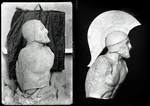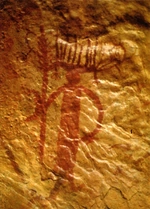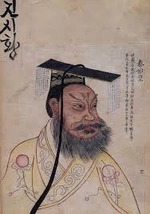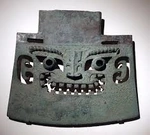The China At The Times When The World Was Young

At the modern time, for Western cultures, the Far East remains hidden and mysterious. Curiosity, still sustained by human nature, too often trusts the narrations that spread within self-contained bubbles, where each of us encapsulates ourselves rather than relying on rigid, reality-bound, well-tested facts. The authors here, with the mission to build bridges from reality to these bubbles, through steady and regular traffic, will be trickling well-balanced drops of truth — with the hope of replacing myths with facts that, by their very nature, are no less exciting than fairy tales themselves.
This chapter leads the reader through the region now well known as China. Of course, our primary interest is to derive the measurements of the culture, but why lose an opportunity to discover slightly more?..
✏️ The authors propose to our readers small modifications in outlining the cultural background methodology. Based on the great diversity of proto-cultures across the region, we will start from more consolidated, centralised (well-established states), and trace their origins in a descending manner. In our opinion, this approach will make it easier to grasp the complexity of the socio-cultural evolutionary processes, with all their outcomes and relational coherences.
For the reader’s convenience, let us provide several prefaces with tables required for a more accurate perception of contextual data. The first will be dedicated to transcriptions and reading rules, and will be called Pinyin References.
| Pinyin | Approx. Pronunciation (IPA/English) | Meaning / Context | Common Older Spelling | Notes |
|---|---|---|---|---|
| Qin | “Cheen” | First unified imperial dynasty (221–206 BCE) | Ch’in, Tsin, Tsun | Source of the word China. |
| Han | “Hahn” | Successor dynasty; established Confucian bureaucracy | Han | Cultural archetype of Chinese ethnicity. |
| Zhou | “Joe” | Pre-imperial feudal dynasty | Chou | Transition from tribal to early state forms. |
| Shang | “Shahng” | Bronze-age dynasty before Zhou | Shang | Known for oracle bones and bronze inscriptions. |
| Tang | “Tahng” | Later flourishing dynasty (618–907 CE) | T’ang | Symbol of classical Chinese culture. |
| Yuan | “Yoo-en” | Mongol dynasty (1271–1368 CE) | Yüan | Established by Kublai Khan. |
| Ming | “Meeng” | Dynasty after Mongol rule (1368–1644 CE) | Ming | Age of maritime exploration. |
| Qing | “Ching” | Manchu dynasty (1644–1912 CE) | Ch’ing | Last imperial dynasty; formalized Mandarin. |
| Luoyang | “Lwoh-yahng” | Imperial capital city (various dynasties) | Loyang | Often paired with Chang’an. |
| Chang’an | “Chahng-ahn” | Capital of Han and Tang dynasties | Ch’ang-an | Modern Xi’an. |
| Chi / Cun / Li | chee / tsun / lee | Traditional length units (≈ 23 cm / 3.33 cm / 500 m) | chih / ts’un / li | Appear in measurement tables. |
This article is part of a long-read publication. [Go to the full version →]








This chapter devoted to two cultures, Babylonia and Persia, and here uncover why...

And here the place we should turning backward, to culture, already passed but under other angle...





